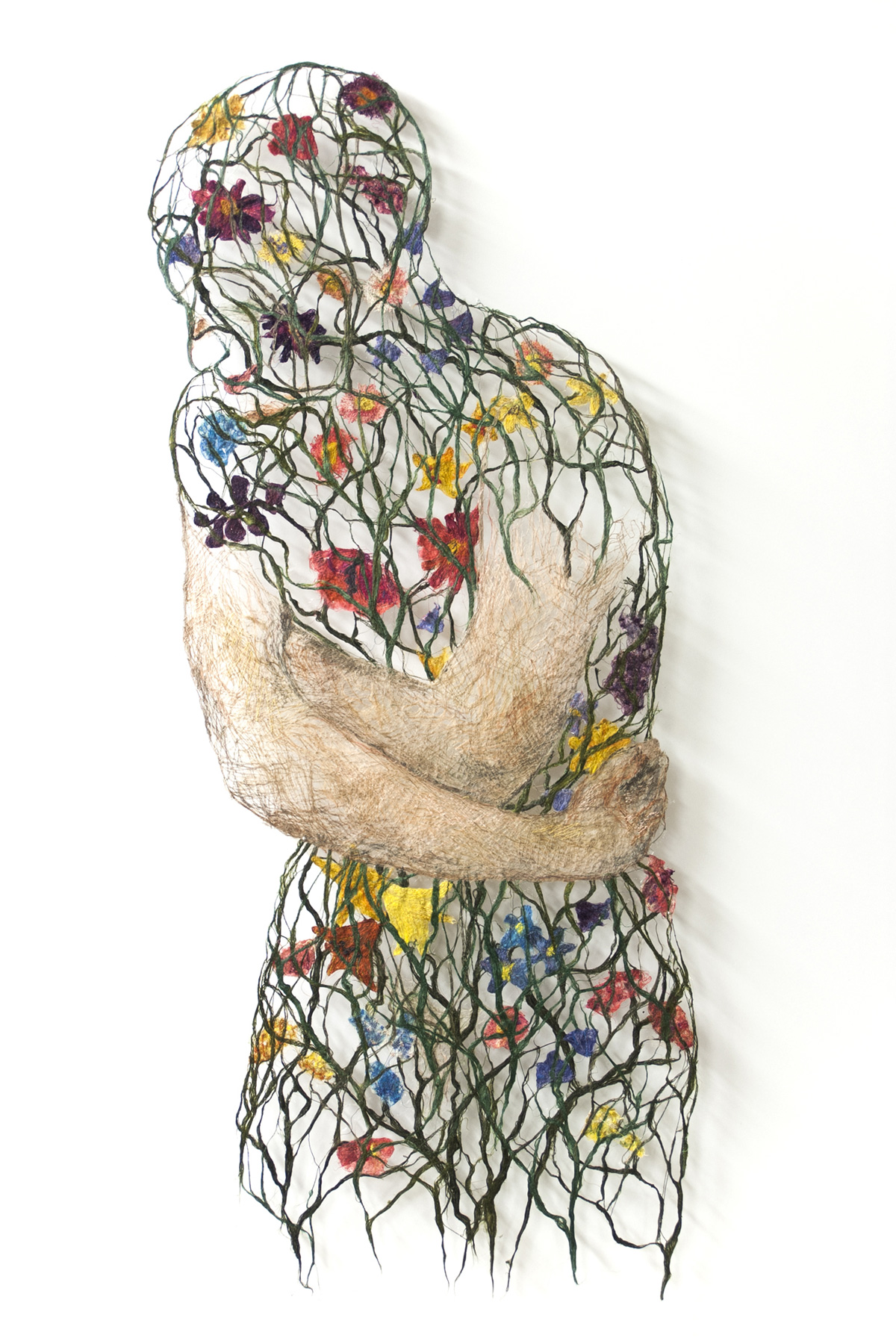
Raija Jokinen reassembles aspects of the human bodies with flax. The Finnish artist interweaves creatures and notes of nature into her recreations of our interior. Jokinen considers her work to exist at the “meeting point of the techniques in painting, graphic art, hand made paper and textile.”
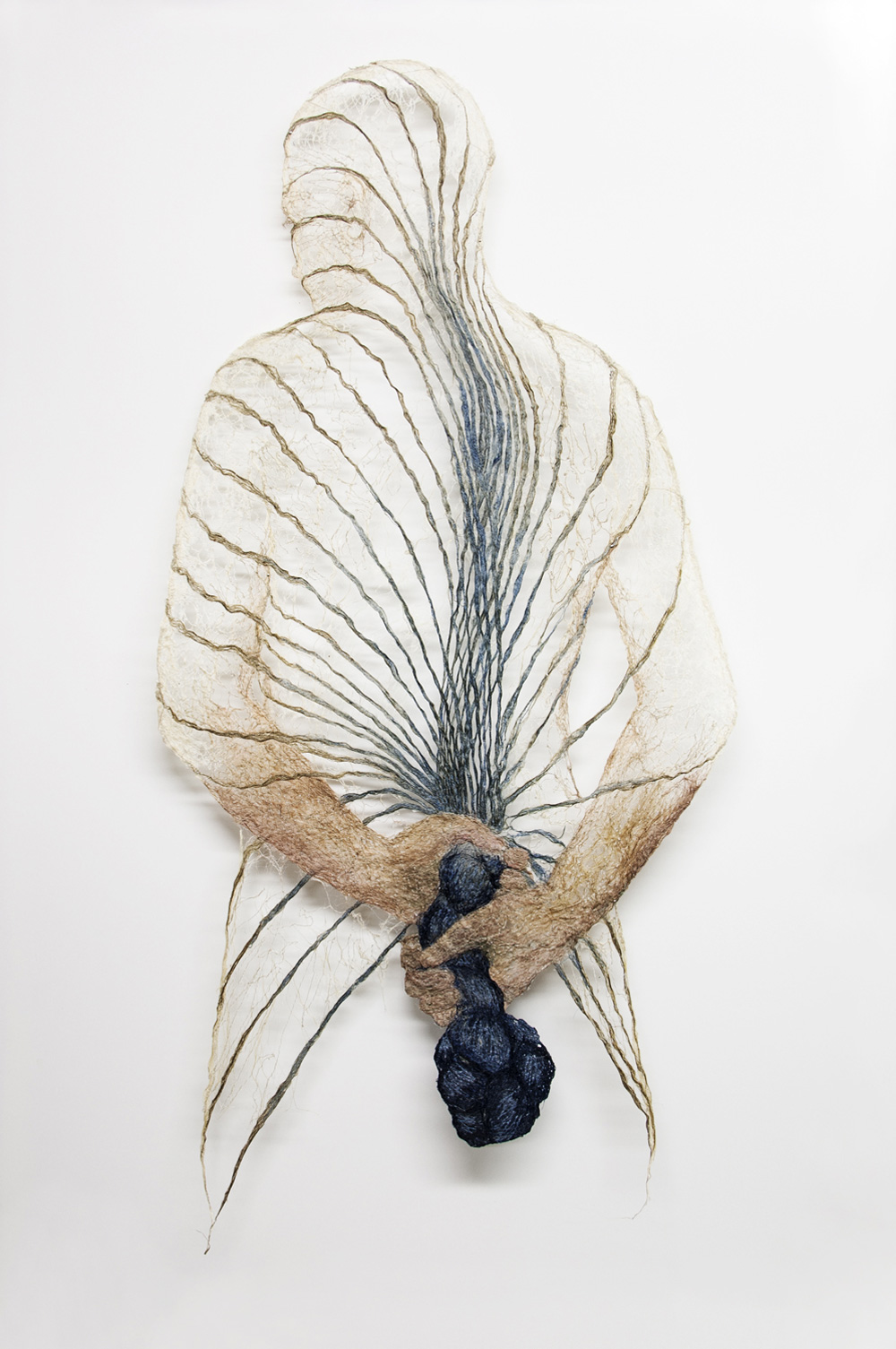
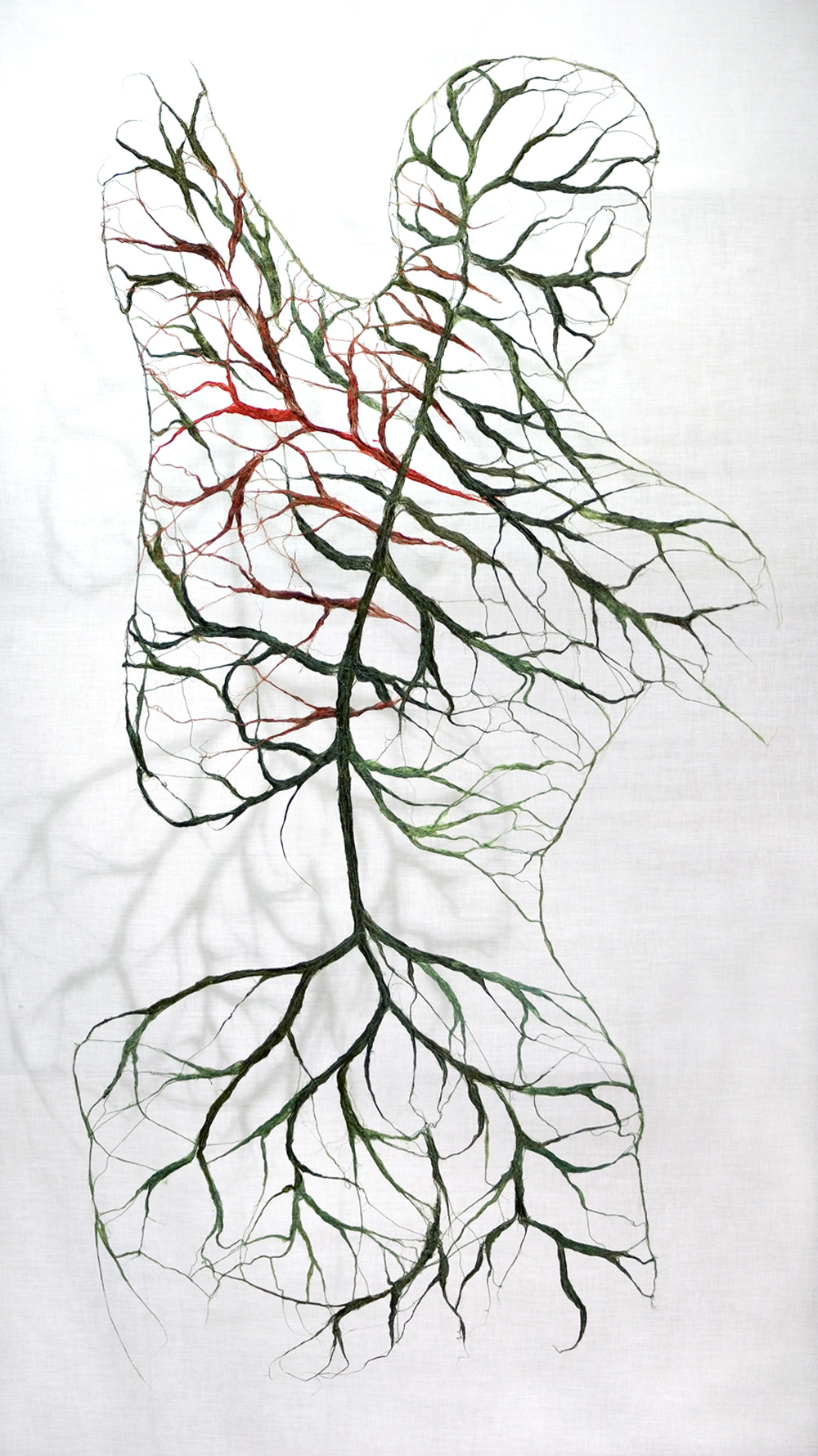
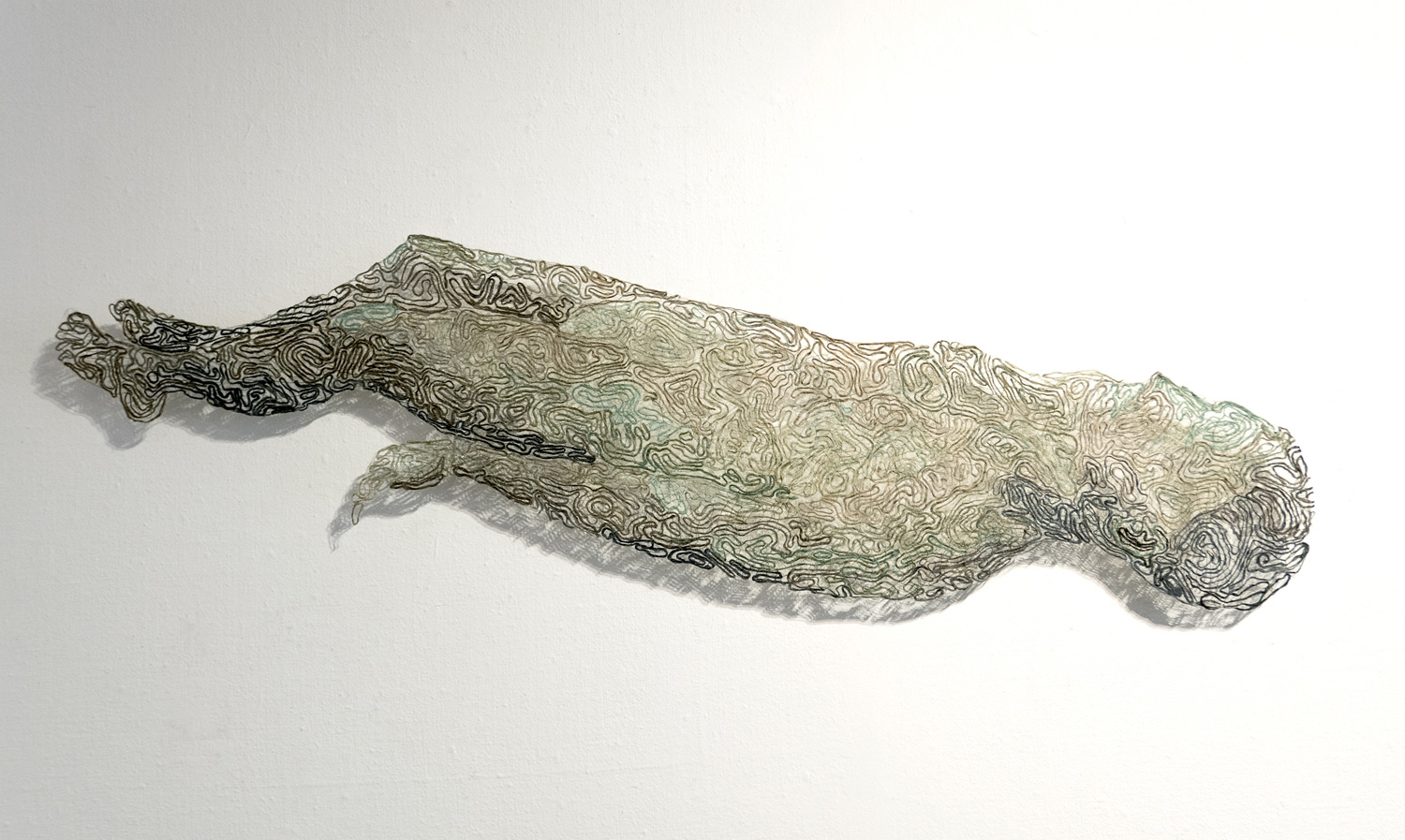
“With my artworks I am searching the interface of spirit and materials: Do we know precisely what is the physical and what is spiritual?” the artist says. “Visually my works are based on physical human body and body parts, but the details don’t follow anatomy or physiology of the real body but offers unexpected variants. In my works a human body represents more the soul and feelings instead of the physical substance. As materials for my works, I started to use paper yarns and proceeded to hand made paper made of flax among others. I proceed to use flax without the traditional papermaking techniques and researched the various other ways to treat it.”
See more of her work below.
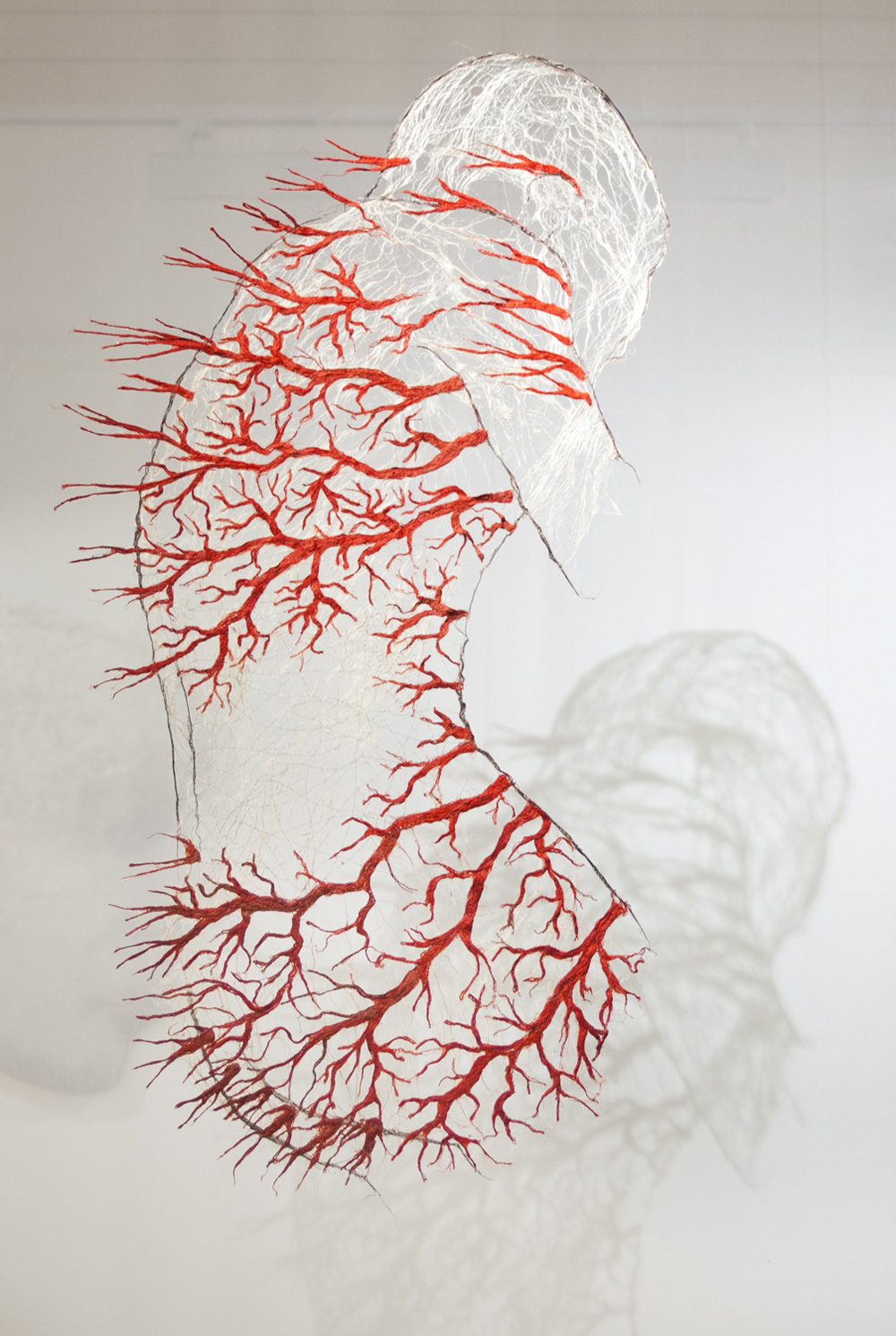
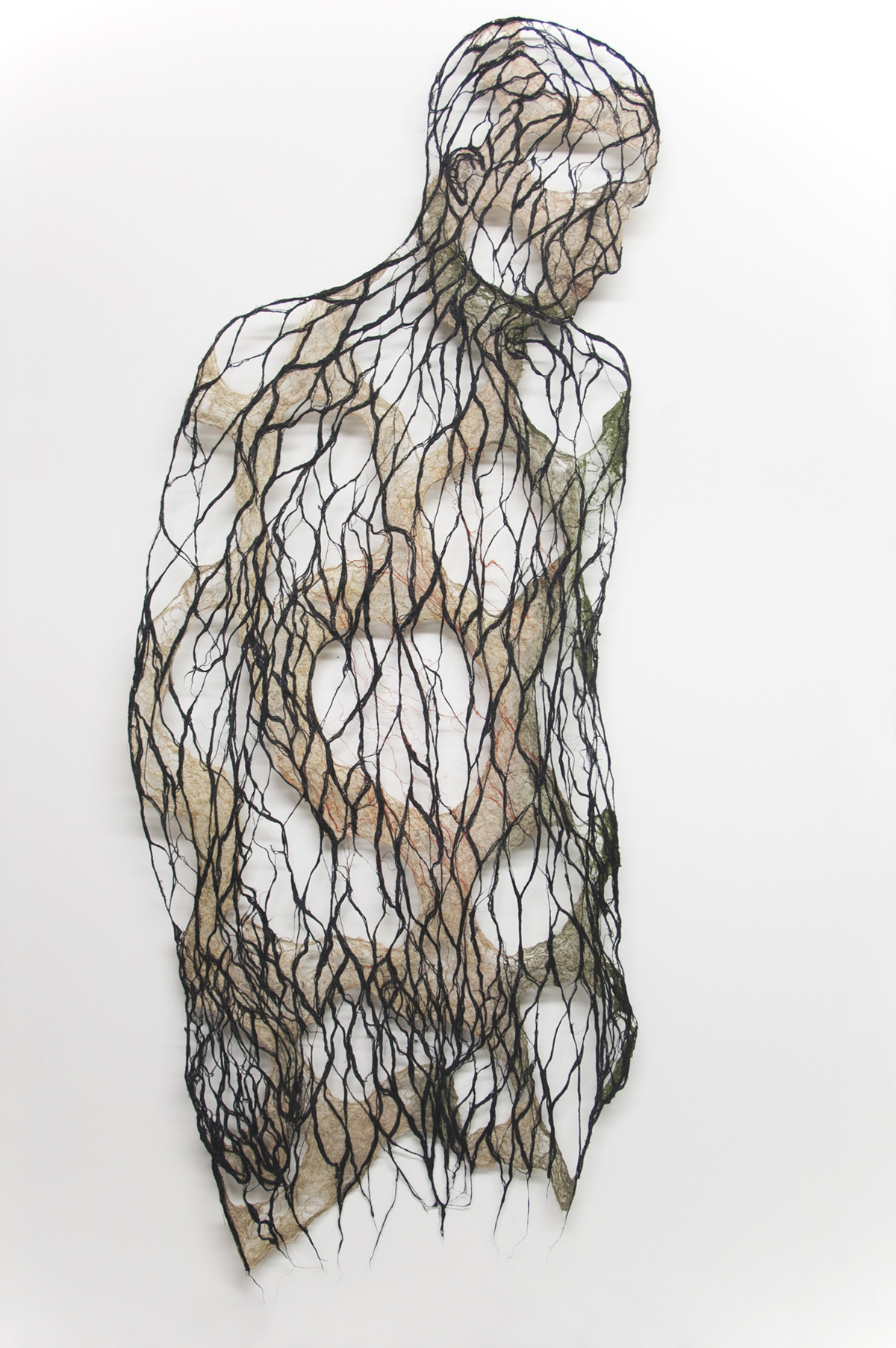
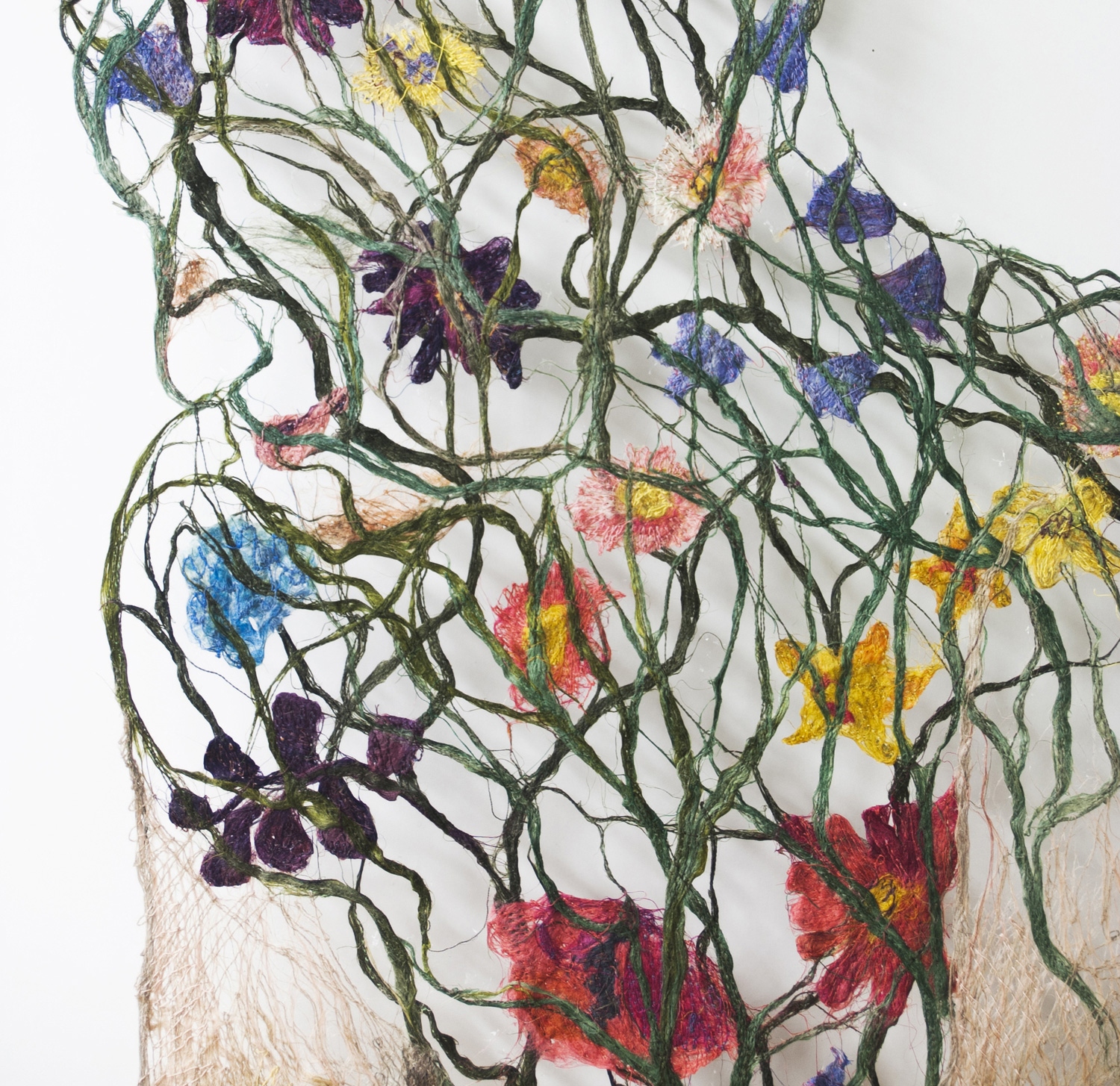
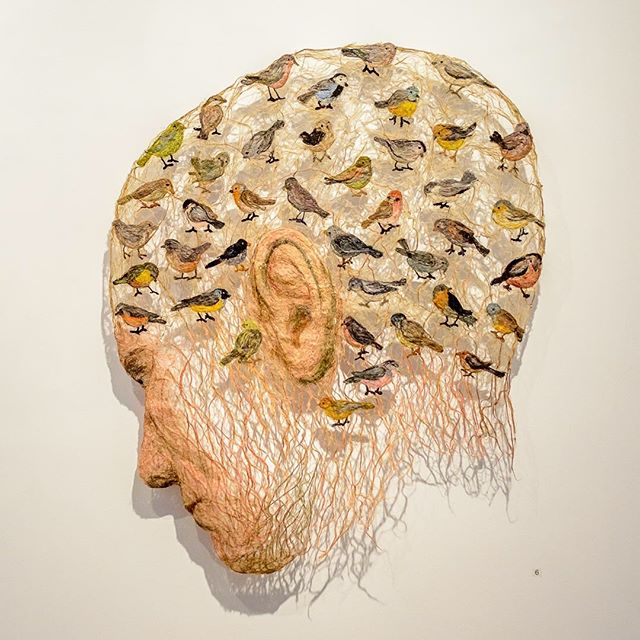



 There’s a problematic aspect to
There’s a problematic aspect to 
